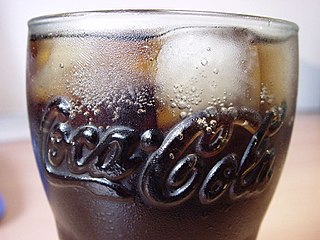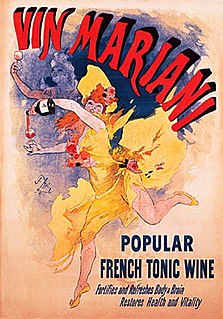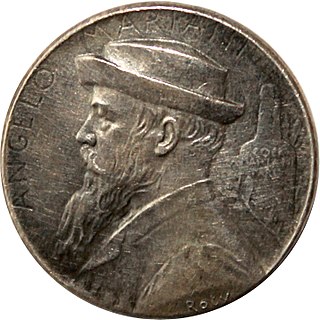Gallery
Lithographed postcards from Deans & Logan, Belfast c. 1900 advertising their "tonic" Sedna
Sedna was an alcoholic beverage made in Belfast, Ireland, and sold as a "tonic". In its earlier days it was made from port wine with the addition of extracts of coca leaf, kola nut and beef. From around 1923 its only advertised additive was the kola extract. The brand name was later used in Australia for a similar product, locally produced.
Sedna was first manufactured by Snaed Manufacturing Company (later Deans, Logan & Co. Ltd.), of 16 Commercial Court, Belfast, and went on sale in 1897. [1] In 1898 the company had secured 10 outlets, which had grown to 100 in 1899. [2]
It has been suggested the brand name was chosen as "Andes" (source of the coca extract) spelled backwards, [3] but it may be significant that both "Sedna" and "Snaed" are anagrams of "Deans". Alex Deans was a principal of the company, and uncle of George Deans (1875–1938), head of Charles Moore and Co.'s Perth, Western Australia, emporium. [4]
The company was in the hands of a liquidator in 1932. [5]
Sedna was from 1908 imported into Australia and marketed by the Seppelts wine company. [6] The trade ran both ways – Deans and Logan marketed Australian wines in Britain. [4]
In New Zealand it was classed as a "tonic" and only sold in chemist's shops, [7] while in Australia it was classed as an alcoholic beverage and legally sold only in licensed premises. In 1920 two Rundle Street, Adelaide businesses were fined for selling the product: Foy & Gibson (a major department store), and Birks Chemists. [8] Chemists in country areas were convicted of sale of Sedna and Maltox (a similar product made by Bickford's), evidence being produced by police "sting operations". [9]
Outrageous behaviour by persons who became inebriated on the tonic has been ascribed to the cocaine and caffeine content of Sedna. [10] After 1923 [11] advertisements no longer mentioned coca and beef in advertisements for the product, kola remaining an essential ingredient.
At some stage Sedna sold in Australia was locally produced by the Seppeltsfield company, and it is likely but by no means certain that Seppelts purchased rights to the brand name from Deans & Logan's liquidators c. 1932. Later bottles are clearly marked "PRODUCE OF AUSTRALIA", and the product has been identified by wine writer Philip White as based on Grenache port from the Para vineyard. [3] It was sold in 750ml bottles and had an alcoholic content 33% proof. It has been reported as containing 15 grains per fluid ounce (around 30g/litre) of kola nut powder, [12] perhaps 60 mg/100 ml of caffeine. (Red Bull contains 32 mg/100 ml).
Marketing of Sedna in Australia ceased some time after 1950. Early postcards advertising the product appear to be quite collectible and are advertised for sale at prices between $50 and $100. [13] It has no connection to the wine made in the Napa Valley AVA or the vodka made in Newfoundland.
Lithographed postcards from Deans & Logan, Belfast c. 1900 advertising their "tonic" Sedna

An alcopop is any of certain flavored alcoholic beverages with relatively low alcohol content, including:

Coca-Cola, or Coke, is a carbonated soft drink manufactured by the Coca-Cola Company. Originally marketed as a temperance drink and intended as a patent medicine, it was invented in the late 19th century by John Stith Pemberton in Atlanta, Georgia. In 1888, Pemberton sold Coca-Cola's ownership rights to Asa Griggs Candler, a businessman, whose marketing tactics led Coca-Cola to its dominance of the global soft-drink market throughout the 20th and 21st century. The drink's name refers to two of its original ingredients: coca leaves and kola nuts. The current formula of Coca-Cola remains a closely guarded trade secret; however, a variety of reported recipes and experimental recreations have been published. The secrecy around the formula has been used by Coca-Cola in its marketing as only a handful of anonymous employees know the formula. The drink has inspired imitators and created a whole classification of soft drink: colas.

Irn-Bru is a Scottish carbonated soft drink, often described as "Scotland's other national drink". Introduced in 1901, the drink is produced in Westfield, Cumbernauld, North Lanarkshire, by A.G. Barr of Glasgow.

John Stith Pemberton was an American pharmacist and Confederate States Army veteran who is best known as the inventor of Coca-Cola. In May 1886, he developed an early version of a beverage that would later become Coca-Cola, but sold his rights to the drink shortly before his death.

Pemberton's French Wine Coca was a coca wine created by the druggist John Pemberton, the inventor of Coca-Cola. It was an alcoholic beverage, mixed with coca, kola nut, and damiana. The original recipe contained the ingredient cocaethylene, which was removed, just like the alcohol had before it, in 1899 because of a social stigma surrounding the rampant use of cocaine at the time.

The Coca-Cola Company's formula for Coca-Cola syrup, which bottlers combine with carbonated water to create the company's flagship cola soft drink, is a closely guarded trade secret. Company founder Asa Candler initiated the veil of secrecy that surrounds the formula in 1891 as a publicity, marketing, and intellectual property protection strategy. While several recipes, each purporting to be the authentic formula, have been published, the company maintains that the actual formula remains a secret, known only to a very few select employees.

Vin Mariani was a coca wine and patent medicine created in the 1860s by Angelo Mariani, a French chemist from the island of Corsica. Mariani became intrigued with coca and its medical and economic potential after reading Paolo Mantegazza's paper on the effects of coca. Between 1863 and 1868 Mariani started marketing a coca wine called Vin Tonique Mariani which was made from Bordeaux wine and coca leaves.

Buckfast Tonic Wine is a caffeinated alcoholic drink consisting of pure caffeine added to fortified wine, originally made by monks at Buckfast Abbey in Devon, England, now made under a licence granted by the monastery, and distributed by J. Chandler & Company in Great Britain, James E McCabe Ltd in Northern Ireland, and Richmond Marketing Ltd in Ireland. It is based on a traditional recipe from France. The wine's distributor reported record sales of £43.2 million as of March 2017.

Schweppes is a beverage brand that originated in the Republic of Geneva; it is made, bottled and distributed worldwide by multiple international conglomerates, depending on licensing and region, that manufacture and sell soft drinks. Schweppes was one of the earliest forms of a soft drink, originally being regular soda water created in 1783. Today, various drinks other than soda water bear the Schweppes brand name, including various types of lemonade and ginger ales.

Angelo Mariani or Ange-François Mariani (1838–1914) was a French chemist and entrepreneur from the island of Corsica. He was born in Pero-Casevecchie, Haute-Corse.
Claytons is the brand name of a non-alcoholic, non-carbonated beverage coloured and packaged to resemble bottled whisky. It was the subject of a major marketing campaign in Australia and New Zealand in the 1970s and 1980s, promoting it as "the drink you have when you're not having a drink" at a time when alcohol was being targeted as a major factor in the road death toll. The jingle was written by Australian social satirist John McKellar.

Ajegroup, commonly known as AJE, is a Peruvian multinational company dedicated to the manufacture, distribution and sale of alcoholic and non-alcoholic beverages. The company was founded by the Añaños-Jerí Family in 1988 in Ayacucho, Peru. It is known for its flagship products Kola Real and Big Cola.
A. M. Bickford and Sons was one of the first manufacturing chemists in South Australia and until 1930 one of the State's most significant family owned companies. In 1930, they amalgamated with half a dozen other similar Australian companies to form "Drug Houses of Australia" (DHA), which very successfully continued to produce the "A. M. Bickford and Sons" products: the "drugs" and "chemicals" under the DHA brand; the cordials and soft drinks under the "A. M. Bickford and Sons" brand.

Pepsi Raw was a cola soft drink created by PepsiCo and Britvic exclusively introduced in the United Kingdom in 2008 as a "Sparkling Cola Drink with Natural Plant Extracts". Pepsi Raw contained naturally sourced ingredients that were free from artificial flavouring, colourings, preservatives and sweeteners. Advertising for Pepsi Raw presented the product as a natural alternative to other colas. Pepsi Raw was also marketed in Norway and Australia.

Royal Tru is a carbonated fruit-flavored soft drink brand owned by The Coca-Cola Company that is only available in the Philippines. The brand was introduced in 1922 by the original San Miguel Brewery. Since being acquired by Coca-Cola's Philippines unit in 2007, the brand has become the Philippine counterpart of Coca-Cola's Fanta brand.

Seppeltsfield, one of Australia's oldest wineries, was founded in 1851 by Joseph Ernst Seppelt. The Seppeltsfield winery is well known for its signature wine, the 100-year-old Para Tawny.
Birks Chemists is a pharmacy in Adelaide whose origins date back to the 1850s.
Oscar Benno Pedro Seppelt, known universally as Benno Seppelt, was a South Australian winemaker who helped the Barossa Valley become recognised as a premium wine region.